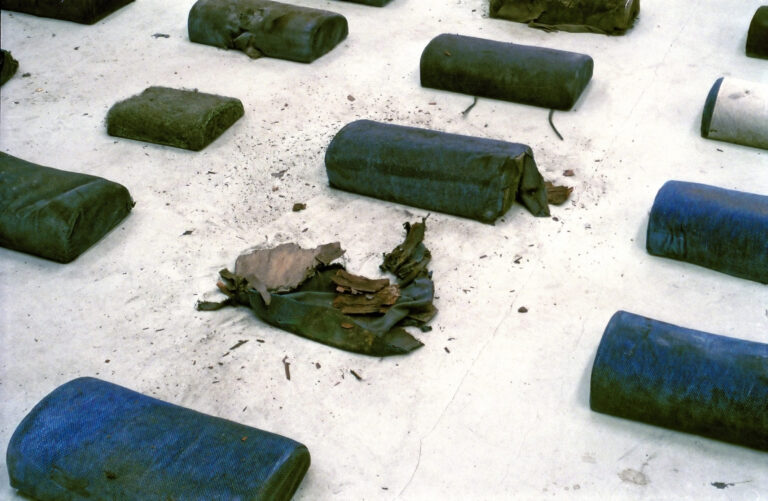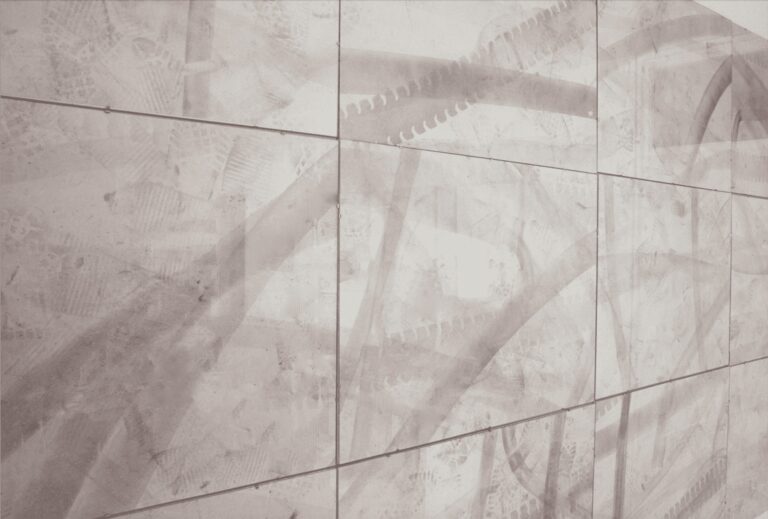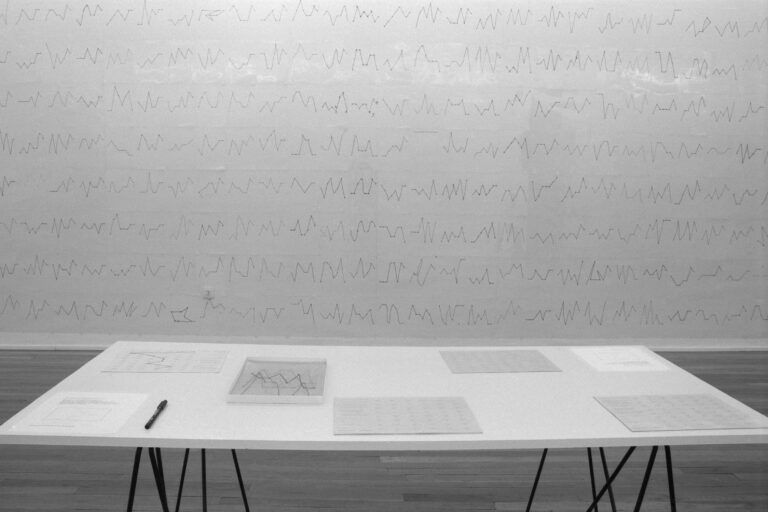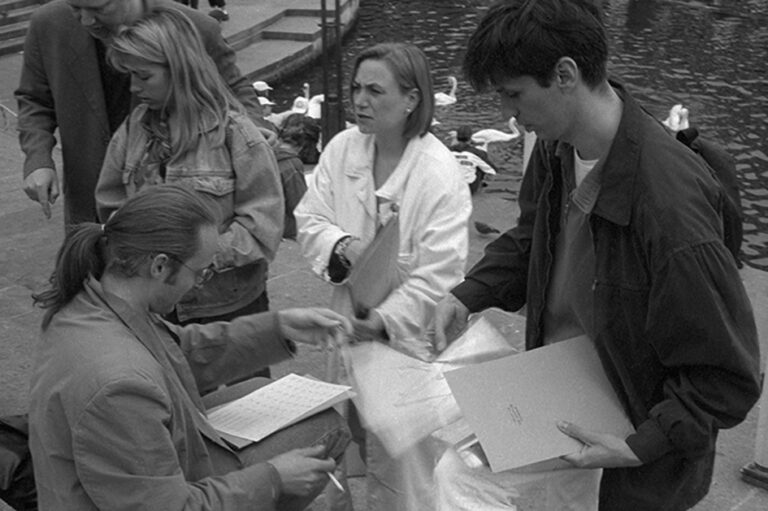Almut Linde
Between Conformity and Resistance
2 MAY until 14 JUN 2025
Opening – 2 MAY 2025, 6-9 pm
Almut Linde’s work revolves around probing the right questions—whose voices are truly heard, how safety is defined in a society that attacks our rights, and what drives acts of destruction. Between Conformity and Resistance presents three early works that laid the foundation for her artistic journey since the 1990s, including a reactivated participatory piece alongside its original form.

Dirty Minimal #16.1 — Head Rests Individualized by Vandalism (1997-2001),
installation view KX, Hamburg, 2005
Courtesy of the artist and PSM
Berlin. Image: Almut Linde
The series Dirty – Minimal #16.1 – Headrests Individualized by Vandalism (1997-2001) documents vandalized headrests found on the tracks of the Hamburg Hbf – Ahrensburg S-Bahn commuter line, which Linde collected and photographed. In Dirty Minimal #9.1 – Postal Logistics Center (1992), she captured the unnoticed, repetitive movements of postal workers, turning functional processes into visual compositions.
In 1994, Linde commissioned a survey on personal well-being, which resulted in unique drawings representing individuals’ responses depicted in Dirty Minimal #12.1 – State of Being. This survey is now being reintroduced, inviting visitors to reflect on how perceptions of safety have evolved over three decades.

Dirty Minimal #9.1 — Action-Painting / Postal Logistics Center (1992)
Courtesy of the artist and PSM, Berlin
Image: Almut Linde

Dirty Minimal #12.1 — State of Being (1994),
installation view Gallery Angel Romero, Madrid, 1994
Courtesy of the artist and PSM, Berlin
Image: Almut Linde
Linde has long questioned the social and institutional dynamics that marginalize groups of individuals, spotlighting their actions in local instances of reality to reveal the unconscious structures of social systems. At its core, her work explores the tension between individual autonomy and social constraints, emphasizing the shifting dynamics of conformity and resistance. Linde urges viewers to confront invisible norms and to take a stand.

Production of Dirty Minimal #12.1 — State of Being,
employees of an opinion research institute at the Rathausmarkt, Hamburg, 1994
Image: Almut Linde
